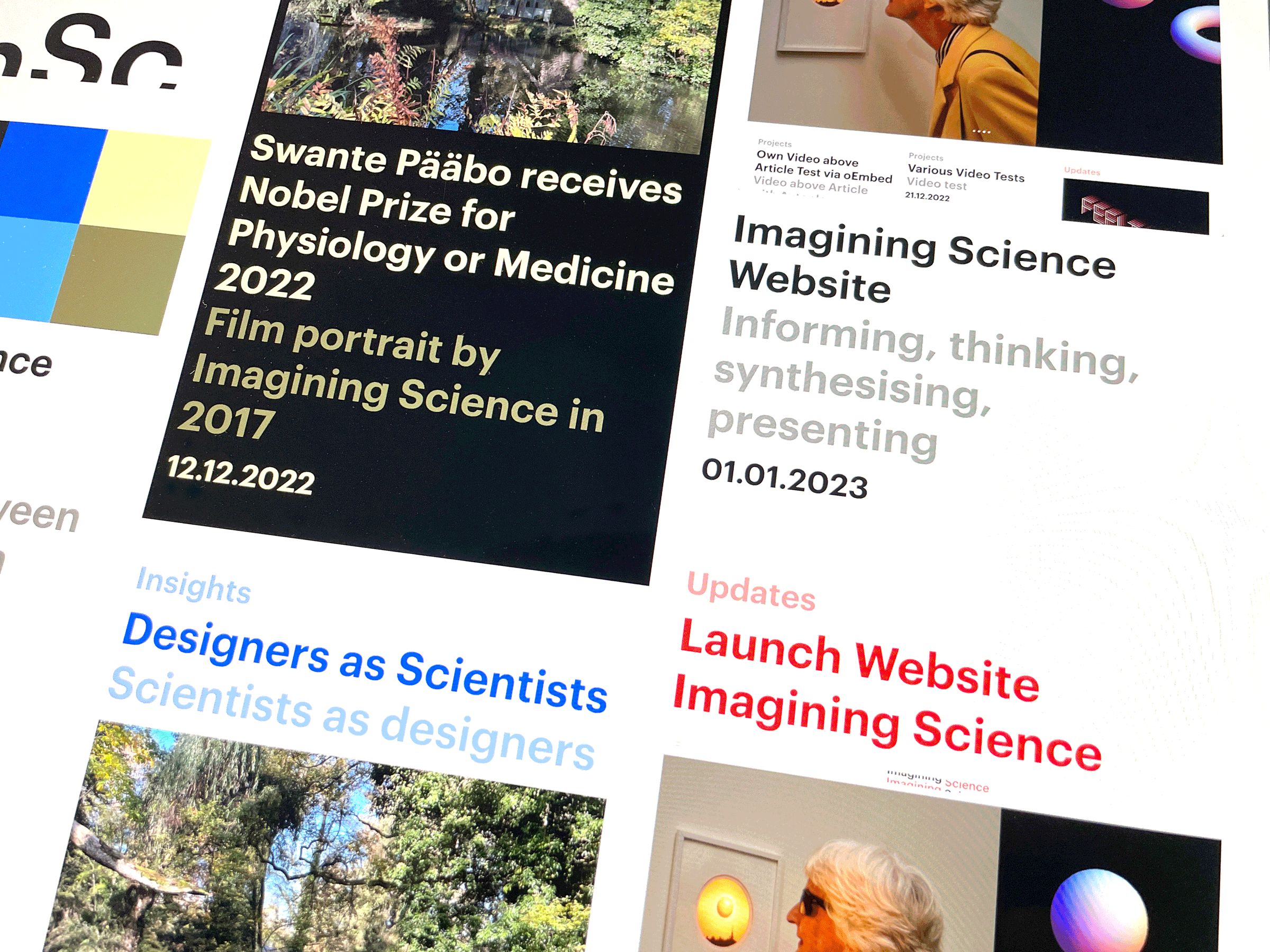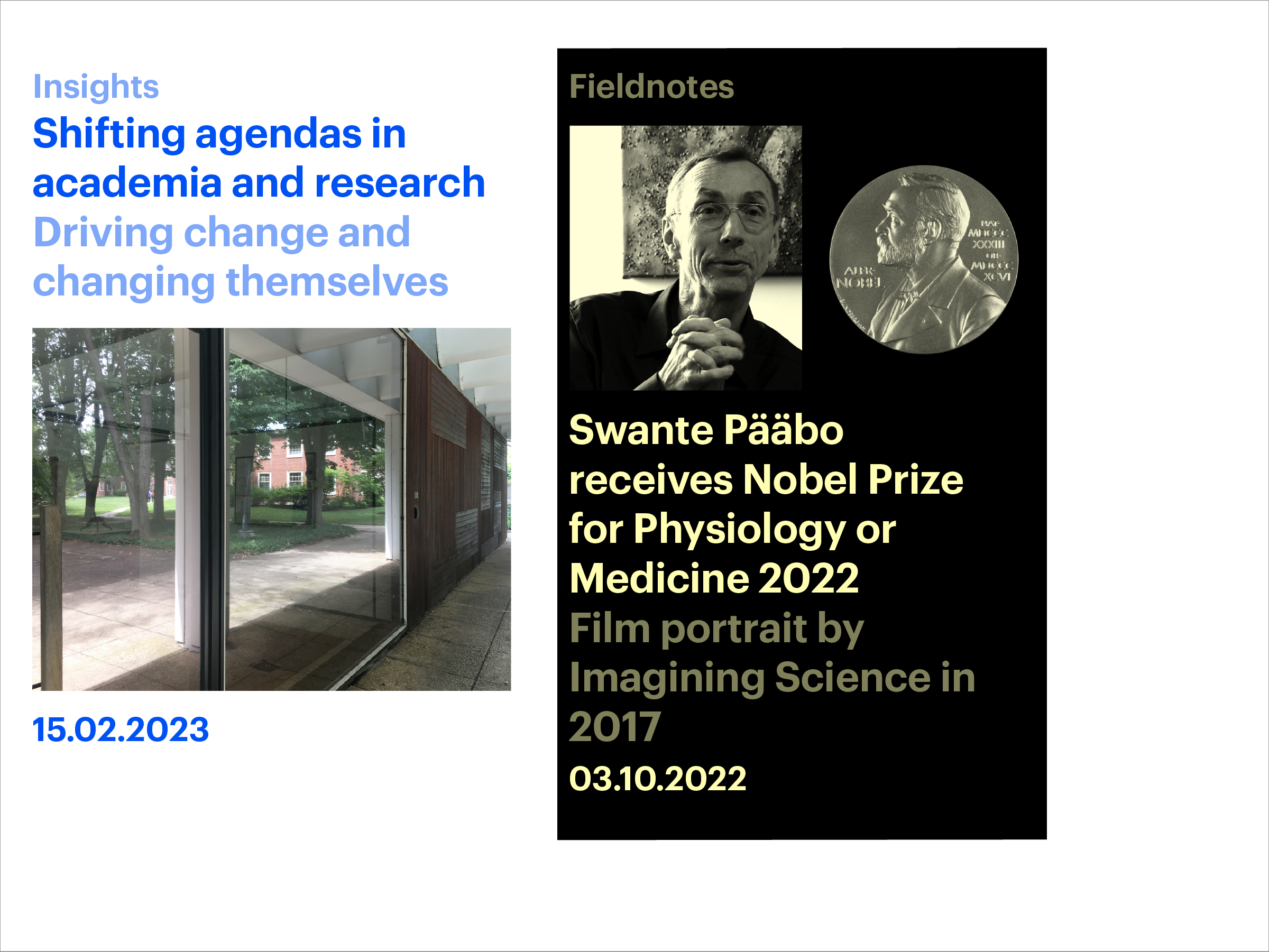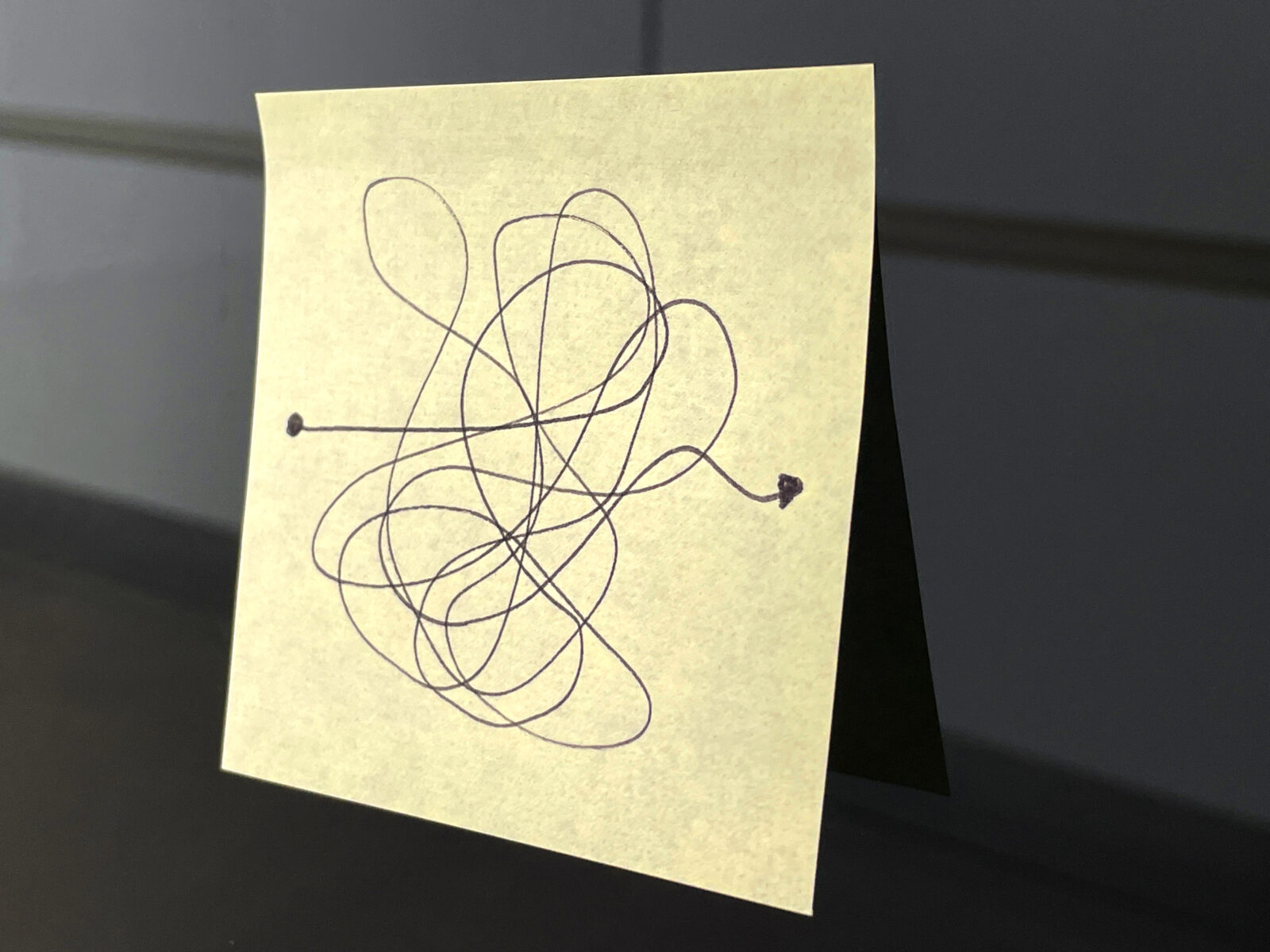

In fall 2023 the beta-version of the Imagining Science website has been published. With this platform, Imagining Science can propel its next organizational developments. Key for our initiative is bringing across who we are, our ambitions, and what we did and can do for our existing and future commissioners and partners.
Apart of the elaborate editorial functionalities, the most eye-catching design principle of the website becomes first visible when changing between light and dark mode. Depending on the mode activated, the colors change to the opposite colors in the color wheel, like a photo positive and negative. This creates changing visual contexts of the presented text and visual information: a multi-perspective.
Presenting
The website showcases projects that have been developed in the framework of Imagining Science. Also, strongly related projects in preliminary professional settings are on display. The projects in the fields science strategies, science environments and science communication are presented as case studies. This allows viewers and readers to understand the nature of the respective project questions, the followed approaches, and the outcomes more thoroughly. Different from most design offices and initiatives that often show outcomes only, Imagining Science emphasizes on the processual qualities of doing research, developing and designing – that similar to science, is based on the principle of building an argument based on sources and referencing. Additionally, these undertakings are characterized by their transdisciplinary and collaborative orientation. Two aspects that unites science and design.
Connecting
After the initiating phase, the website will serve as a platform to reach out to scientists, science leaders, designers, commissioners and partners. We observe the current social debate with several social divides (for instance filter bubbles). We witness the rise of political populism that openly questions scientific truth as well as the social relevance of cultural production. Imagining Science understands itself as an intellectual and creative capacity to develop connections between scientists and citizens, who are stakeholders in any scientific progress. We understand ourselves as translators and mediators between science and society by the means of design, a practice that includes analysis and strategic thinking, imagination and creation.
Exchanging
We intentionally chose to launch Imagining Science and its website in a slow pace instead of forcing a flying takeoff and let it grow step by step. In the future, imaginingscience.eu can serve as a platform that contributes to professional discourse. We envision the publishing of precisely chosen topics at the intersection of science and design. This can include self-initiated blog articles and creative, transmedia positions (Insights) as well as commented sources of which we think are relevant to feature (Fieldnotes).


Design concept
The concept behind the website is that of a webzine that facilitates various editorial page setups. Information pages and discursive articles, such as interviews are differentiated through the application of the sans-serif (Graphik) and serif font families (Guardian Text Egyptienne). Various image and media formats can display transmedia content in a suitable form adaptive to the substance matter.
Special attention was given to the note and annotation features. The notes enable the reader to find references to sources in a comprehensive manner. Although at the launch of the website occasionally used only, the annotations offer the reader and viewer an additional conceptual layer added by the editor. Both elements can contain text and images, to allow also besides text also visually enriching notes and associations.
Apart of the elaborate editorial functionalities, the most eye-catching design principle of the website becomes first visible when changing between light and dark mode. Depending on the mode activated, the colors change to the opposite colors in the color wheel, like a photo positive and negative. This creates changing visual contexts of the presented text and visual information: a multi-perspective.

Acknowledgement
The website has been designed by the English-Dutch designer Simon Davies in close collaboration with Evert Ypma.
More information about the Imagining Science visual identity can be found in the Projects section.
Imagining Science greatly thanks all project collaborators!


